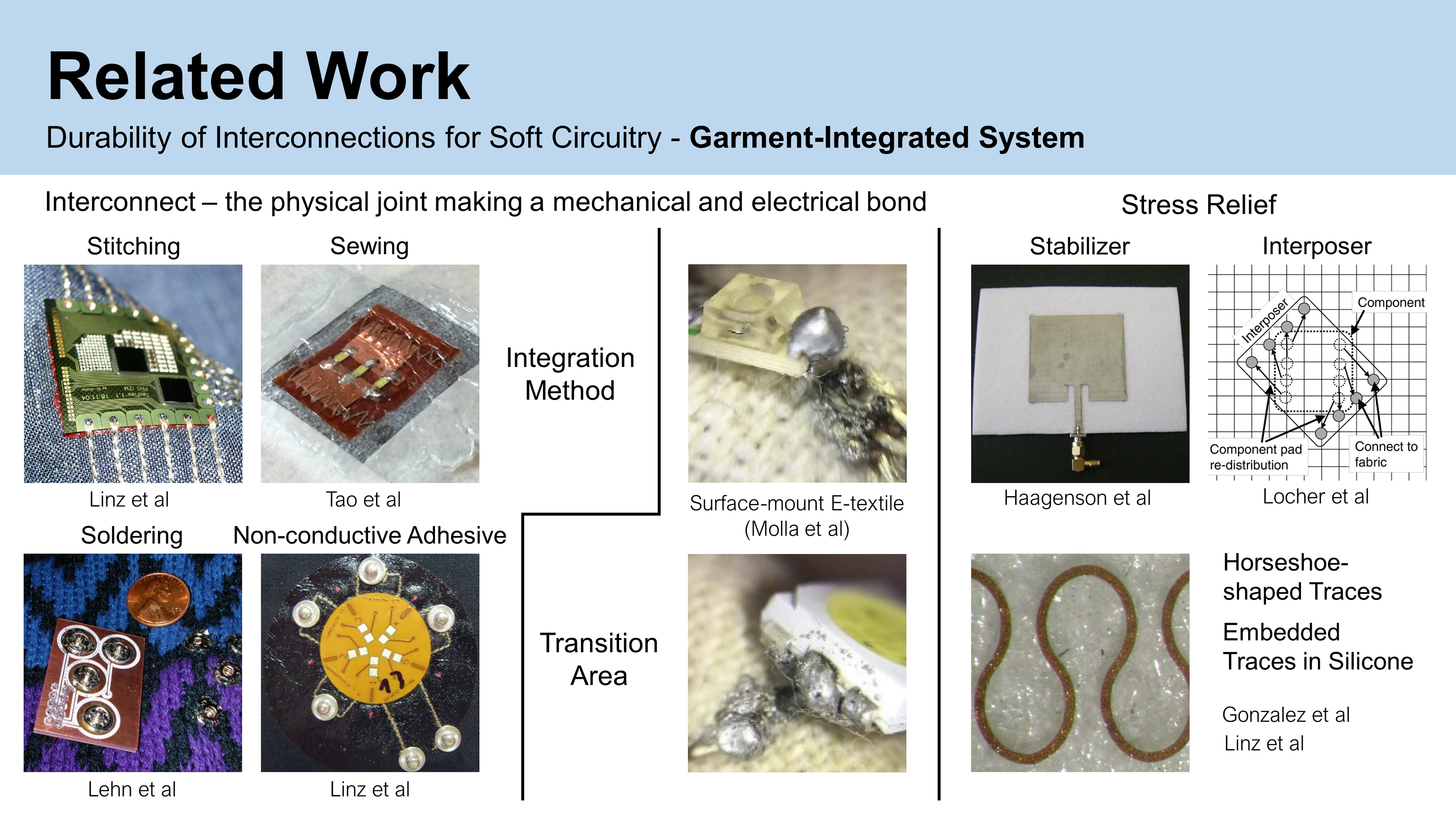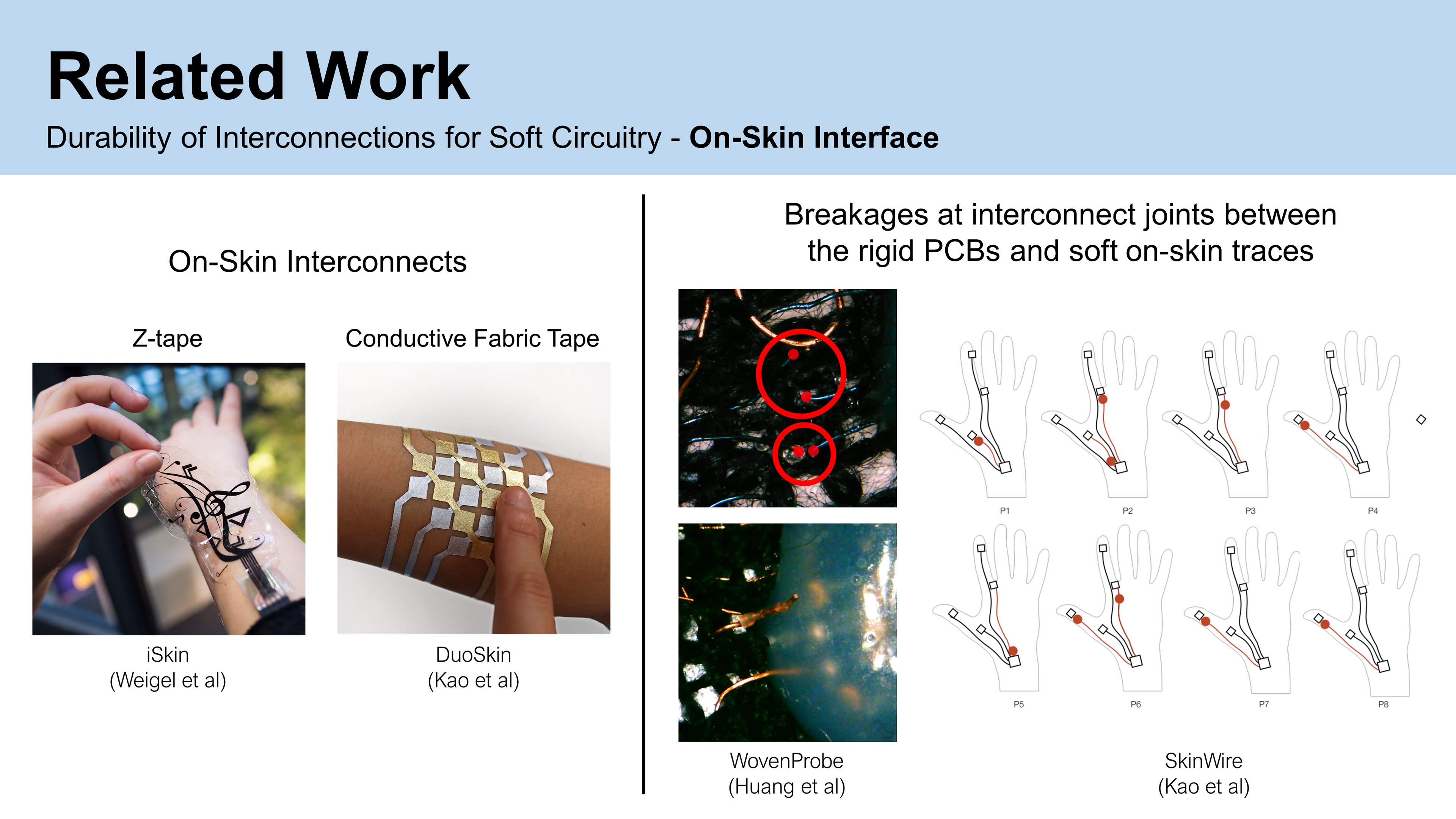We present a systematic study evaluating the durability and reliability of five interconnection designs for on-skin systems under tensile and bending tests as well as design guidelines on PCB interconnects.
Kunpeng Huang, Md. Tahmidul Islam Molla*, Kat Roberts*, Pin-Sung Ku*, Aditi Galada, Cindy Hsin-Liu Kao (*equal contribution)
ACM International Symposium on Wearable Computers (ISWC) 2021
PDF | DIO | Talk | Hybrid Body Lab
Durable and reliable fabrication of on-skin systems remains an open research question to enable developing on-skin interfaces at scale. One of the main challenges is the complexity in achieving robust devices to connect hard goods (printed circuit boards and electronics) with extremely soft materials (slim on-skin interface traces). This paper presents a systematic study evaluating the durability of 5 interconnection designs (including PCB shape, solder pad positions, and rigid versus flexible PCB) for on-skin systems under stretching and bending tests. The study results show the significant robustness of interconnects on flexible PCBs over rigid PCBs under bending and the better performance of elongated shaped flexible PCBs over shorter flexible PCBs. Further, we demonstrate that an interposer design consisting of 2 layers of flexible PCBs combines the benefits of both the rigid and flexible boards. Based on our experimental results, we present a set of design guidelines for PCB interconnect design for resilient on-skin systems.
(a) Schematics of the woven samples with integrated serpentine copper wires for bending tests. Three PCB shapes were investigated: (a1) Minimal, (a2) Elongated, (a3) Extended. (b) Example of a woven sample along with the reflow soldered flexible PCBs (b1-b3). (c) Soldering processes for FPCBs with pads on the top surface (c1) and bottom surface (c2.1-c2.3). (d) A prototype worn on the hand.
(a) Apparatus for the bending test. (b) Side view of the device. (c) Schematics showing the two bending axes and the woven prototype.
(a) Number of broken wires versus number of bends for the five tested samples. (b) Microscope images of the broken interconnects for sample 1 (b1), 2 (b2), and 5 (b3).
We explored different weaving techniques, pad shapes, sizes of PCBs, techniques for handling and mounting the PCB components onto the on-skin substrate, and circuit design features to maximize the durability of the interconnections.






Kunpeng Huang, Md. Tahmidul Islam Molla*, Kat Roberts*, Pin-Sung Ku*, Aditi Galada, and Cindy Hsin-Liu Kao. 2021. Delocalizing Strain in Interconnected Joints of On-Skin Interfaces. In 2021 International Symposium on Wearable Computers (ISWC '21). Association for Computing Machinery, New York, NY, USA, 91–96. DOI:https://doi.org/10.1145/3460421.3478812